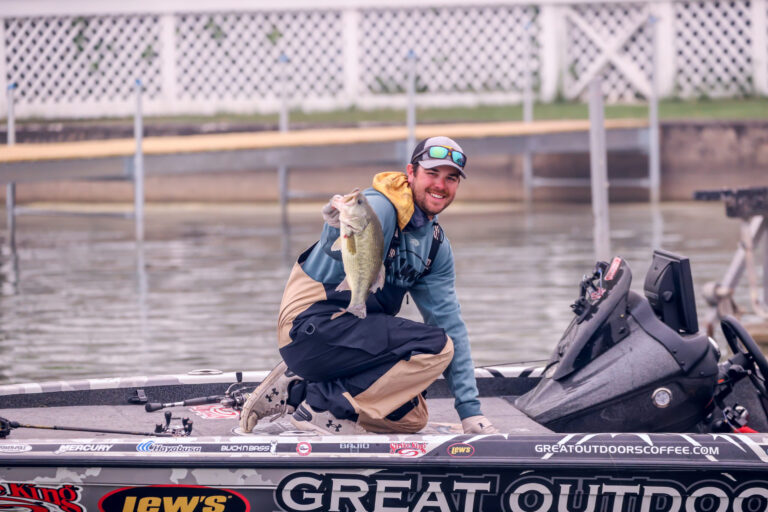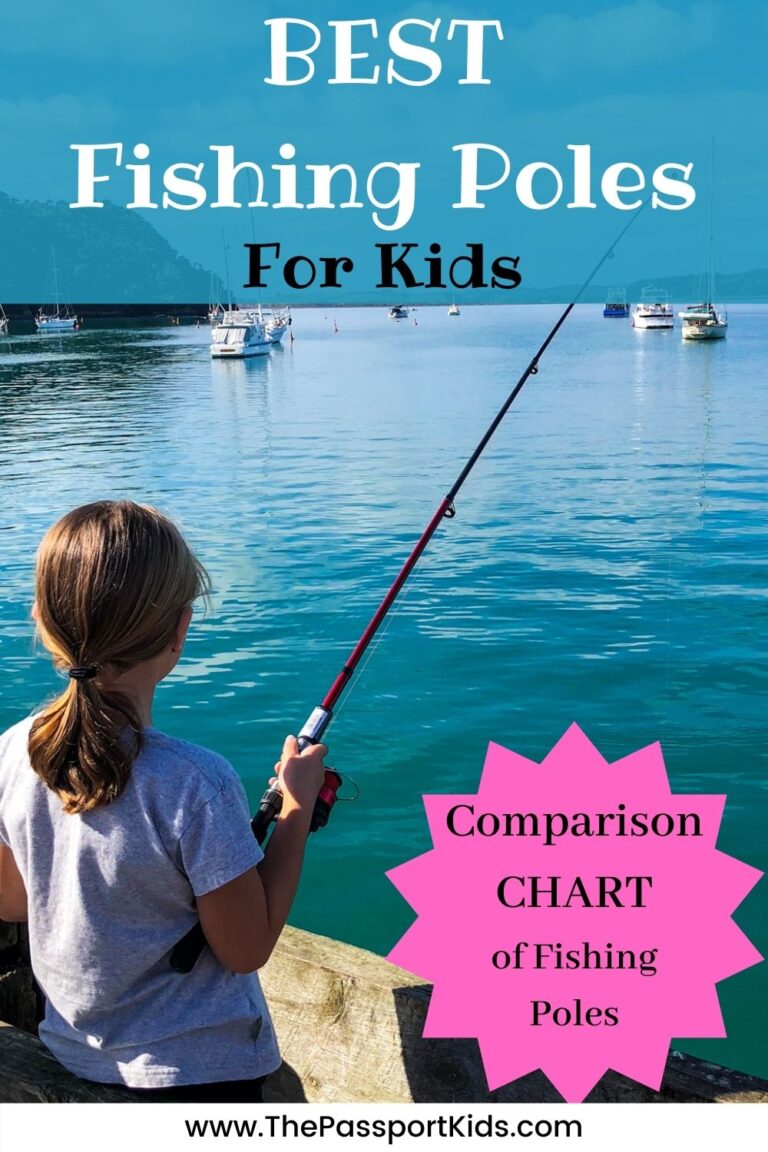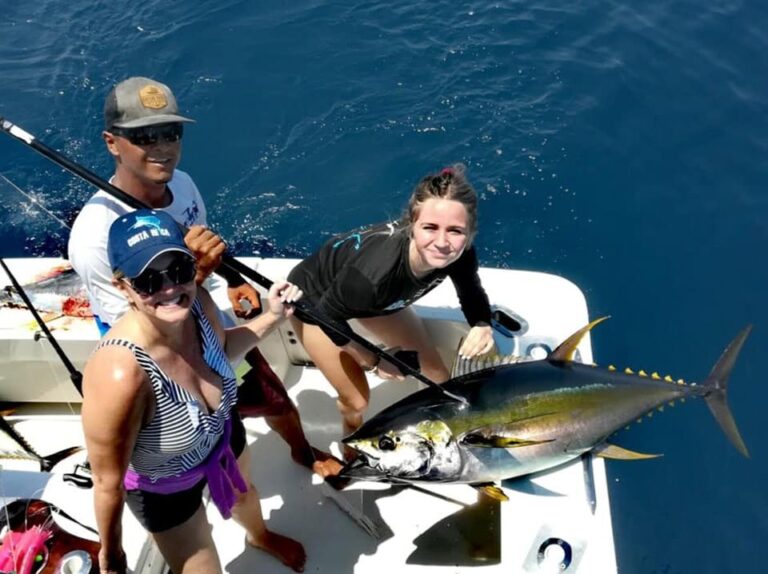Fishing is better when water is rising because it attracts fish and improves their feeding activity. During this time, fish seek food closer to the shore, making it easier to catch them.
Additionally, the rising water can dislodge insects and other small organisms from the surrounding vegetation, providing an abundant food source for fish. This increased activity and availability of food make it a prime time for fishing. Moreover, the rising water also stirs up the bottom, making it harder for fish to detect potential predators or notice fishing lines.
Overall, fishing during the rising water period can result in a higher likelihood of success and a more rewarding experience for anglers.

Credit: www.thedmlair.com
Understanding The Impact Of Rising Or Falling Water Levels
Factors That Contribute To Rising Or Falling Water Levels
- Precipitation: The amount of rainfall directly affects water levels in rivers, lakes, and other bodies of water. Increased rainfall can cause water levels to rise, while a lack of precipitation can lead to falling water levels.
- Snowmelt: In areas where snow accumulates during winter, the melting snow in spring can contribute to rising water levels. This is especially common in mountainous regions where snowpack is significant.
- Runoff: When rainwater flows over the ground and into rivers or other water sources, it causes an increase in water levels. Runoff can result from heavy rainfall or rapid snowmelt.
- Dams and reservoirs: Man-made structures such as dams and reservoirs affect water levels. Dams can regulate water flow, leading to controlled rises or falls in water levels.
How Changes In Water Levels Affect Fish Behavior
- Feeding patterns: Rising or falling water levels can profoundly influence fish feeding patterns. When water is rising, fish tend to become more active and opportunistic in their search for food. Falling water levels, on the other hand, may force fish to retreat to deeper, more sheltered areas, decreasing their feeding activity.
- Movement and migration: Changes in water levels can prompt fish to move or migrate to different areas. Rising water may encourage fish to move upstream or seek out new habitat, while falling water levels can make fish relocate to deeper pools or downstream areas.
- Spawning behavior: Water level fluctuations can impact fish spawning behavior. Some species prefer to spawn during rising water levels, as it provides suitable conditions for egg fertilization and embryo development. Others may be more inclined to spawn when water levels are falling, as it exposes newly created beds necessary for the successful incubation of eggs.
Adapting Fishing Techniques To Changing Water Conditions
- Water depth considerations: When water levels are rising, fishing in shallow areas near the shore or inflows can yield productive catches. In contrast, during falling water levels, shifting focus to deeper structures, such as submerged rocks or drop-offs, may increase chances of success.
- Lure and bait selection: Adjusting lure and bait choices to match changing water conditions is crucial. During rising water levels, try using lures that mimic distressed baitfish or insects being washed downstream. When water levels are falling, opt for subtle presentations, such as finesse techniques, to target fish in deeper, more sheltered areas.
- Understanding fish movement: Observing fish behavior and adjusting your fishing strategy accordingly is vital. Pay attention to where fish are congregating, whether they are moving with the rising water or seeking refuge in specific areas during falling water conditions. This knowledge can help you position yourself in the right spot to increase your chances of success.
By understanding the factors contributing to rising or falling water levels, as well as their impact on fish behavior, anglers can adapt their fishing techniques accordingly. Being aware of how water level changes affect feeding patterns, movement, and migration, as well as spawning behavior, allows for more strategic and successful fishing trips.
So, whether the water is rising or falling, adjusting your approach and keeping these factors in mind can help enhance your fishing experience.
Fishing Strategies For Rising Water Levels
Fishing during rising water conditions can present unique challenges and opportunities. As the water levels increase, fish are often triggered into a feeding frenzy, making it an ideal time to cast your line. Here are some effective fishing strategies to help you make the most of these rising water conditions.
Identifying Prime Fishing Spots During Rising Water Conditions
- Look for areas with structure: Rising water tends to push baitfish and other prey species towards areas with structure, such as submerged trees, rocks, or drop-offs. These structures provide cover and ambush points for predatory fish.
- Focus on transition zones: Fish often concentrate in transition zones during rising water. These areas can be where a fast-flowing river meets a lake or where a creek flows into a larger body of water. Look for areas where the current slows down or where there is a sharp change in water depth.
- Target shallow areas: As the water rises, fish may move into shallower areas to feed. Look for shallow flats, points, or weed beds where fish can find food and shelter.
Best Lures And Bait To Use When Water Is Rising
- Crankbaits: Crankbaits that can imitate disoriented baitfish or crawfish are highly effective during rising water conditions. Choose lures with a tight wobble and bright colors to grab the attention of fish.
- Spinnerbaits: Spinnerbaits with flashy blades can mimic baitfish in distress, making them irresistible to predatory fish. Experiment with different retrieve speeds to find the most enticing action.
- Soft plastics: Soft plastic baits such as worms, creature baits, or swimbaits can be effective when the water is rising. Rig them with appropriate weights to match the current and use slow, subtle movements to entice lethargic fish.
Adjusting Retrieval Speed And Presentation Techniques
- Slow down your retrieve: Rising water conditions can make fish sluggish and less likely to chase after fast-moving baits. Slow down your retrieve and give the fish ample time to strike.
- Vary your presentation: Fish may respond differently to various presentation techniques during rising water. Try different retrieves such as steady, erratic, or pause-and-go to trigger a reaction from fish.
- Pay attention to depth: As the water rises, fish may move to different depths to find comfort or search for prey. Adjust your lure’s depth by using different weights or adding suspenders to target fish at their preferred level.
Tips For Fishing In Flooded Areas Or Near Overflowing Rivers
- Safety first: Before fishing in flooded areas, prioritize your safety. Avoid wading in strong currents or areas with submerged hazards. Always wear a life jacket when fishing in or near overflowing rivers.
- Focus on eddies and backwaters: Look for slower-moving water, such as eddies or backwaters, where fish seek refuge during flooding. These areas offer calmer conditions and can hold concentrations of fish.
- Experiment with high-visibility lures: In murky water caused by flooding, fish rely more on their lateral line and visual cues to locate prey. Using brightly colored lures or those with contrasting patterns can increase your chances of attracting fish.
Remember, adapting your fishing strategies to changing water conditions is the key to success. By identifying prime fishing spots, using the right lures and bait, adjusting your retrieve, and considering the unique challenges of fishing in flooded areas, you can maximize your catch during rising water levels.
Happy fishing!
Fishing Strategies For Falling Water Levels
As water levels begin to drop, fishing can present a unique set of challenges. However, with the right strategies and techniques, you can still have a successful fishing trip. Here are some tips to help you navigate the waters when levels are falling:
Locating Fish In Shallower Water As Levels Drop
- Look for areas where the water is still relatively deep, even as the overall level is decreasing. These pockets of deeper water can attract fish seeking refuge from the falling levels.
- Pay attention to the presence of structure, such as rocks, logs, or submerged vegetation. These areas can provide cover for fish, making them more likely to be found in shallower water.
- Keep an eye out for any changes in current patterns. Fish tend to congregate where the flow of water is altered, such as near bends or narrows. These areas can be prime fishing spots when water levels are falling.
Adjusting Bait Selection For Finicky Fish
- Fish can become more selective about their food choices when water levels are falling. Experiment with different types of bait until you find what the fish are biting on.
- Use smaller bait and lures to match the smaller prey available in shallower waters.
- Consider using live bait, such as worms or minnows, which can be more enticing to fish in these conditions.
Utilizing Stealth And Patience To Entice Bites
- Approach the fishing spot quietly to avoid spooking the fish. Keep noise to a minimum and avoid sudden movements.
- Cast your line gently into the water to avoid creating a disturbance.
- Be patient and give the fish enough time to inspect your bait. With falling water levels, fish may be more skittish and cautious, so it may take longer for them to bite.
Techniques For Fishing In Exposed Structures And Hidden Pockets
- Look for areas where the water level has exposed new structures, such as fallen trees or rock formations. These spots can attract fish, as they provide additional cover and foraging opportunities.
- Cast your bait close to these structures and work it slowly to entice any lurking fish.
- Target hidden pockets within the structure, where fish may be seeking shelter from the falling water. These hidden spots can yield great results if approached carefully and with the right technique.
Remember, fishing in falling water levels requires a bit of adaptability and creativity. By targeting the right areas, adjusting your bait selection, using stealth and patience, and taking advantage of exposed structures and hidden pockets, you can increase your chances of a successful fishing trip even when the water is on the decline.
So grab your gear, head out to the water, and put these strategies to the test. Happy fishing!
Expert Tips For Mastering Fishing In Changing Water Conditions
Observing Weather Patterns And Predicting Water Level Changes
- One key aspect of mastering fishing in changing water conditions is to observe weather patterns and predict water level changes. Here are some tips:
- Keep an eye on the weather forecast to anticipate any upcoming changes in atmospheric conditions.
- Understand how different weather patterns can affect water levels. For example, heavy rainfall can cause water levels to rise rapidly, while prolonged dry spells can lead to falling water levels.
- Take note of local weather patterns specific to the fishing area you plan to visit. Factors such as wind direction, temperature fluctuations, and barometric pressure can all influence water levels.
- Pay attention to natural occurrences such as tides, moon phases, and seasonal variations, as these can also impact water levels.
- Combine your observations with historical data or fishing records to make more accurate predictions about water level changes. This information can be obtained from local fishing reports or online resources.
Adapting To Sudden Changes In Water Conditions
- Adapting to sudden changes in water conditions is crucial for successful fishing. Consider the following strategies:
- Be prepared with a versatile range of fishing techniques and equipment that can be adjusted to different water conditions. This includes having various lures, baits, and lines suitable for different depths and water turbidity.
- If the water is rising, focus on areas where fish tend to move up in response to the rising water. Look for areas with cover such as fallen trees, submerged vegetation, or underwater structures where fish might seek shelter.
- In falling water conditions, target areas where fish may concentrate as they retreat to deeper areas. Look for drop-offs, ledges, or channels that provide a transition from shallow to deeper water.
- Experiment with different retrieval speeds and lure presentations to adapt to changing water conditions. Fish may respond differently depending on whether the water is rising or falling, so be open to adjusting your fishing technique accordingly.
The Importance Of Patience And Persistence In Challenging Conditions
- Fishing in changing water conditions can present challenges, but it’s important to remain patient and persistent. Consider the following tips:
- Don’t get discouraged if initial efforts don’t yield immediate results. Sometimes, it takes time for fish to adapt to the changing water conditions and for their behavior to adjust accordingly.
- Stay focused and pay attention to subtle changes in fish behavior or feeding patterns. This may require making slight adjustments to your fishing strategy, such as changing the depth you’re targeting or trying different bait options.
- Remember that fishing is about enjoying the experience and being in nature, not just about catching fish. Appreciate the peaceful and serene environment even if the fishing conditions are not ideal.
- Use challenging conditions as an opportunity to improve your fishing skills. Experiment with different techniques, learn from your observations and experiences, and continuously adapt to the changing water conditions.
Investigating Local Fishing Reports And Seeking Advice From Experienced Anglers
- Before heading out to fish in changing water conditions, it’s essential to gather relevant information from local fishing reports and experienced anglers. Here’s why it matters:
- Local fishing reports provide valuable insights into recent catches, water conditions, and any notable changes in fish behavior. They can help you understand which areas might be more productive and inform you about potential challenges.
- Trusted sources for fishing reports include local bait and tackle shops, fishing forums, or websites dedicated to fishing in your area. Look for up-to-date information and reports from anglers who regularly fish in the location you plan to visit.
- Seek advice from experienced anglers who have firsthand knowledge of fishing in varying water conditions. They can offer valuable tips and techniques specific to the changing water levels and the fish species you’re targeting.
- Engaging in conversations with experienced anglers can also provide you with insights on how to adapt your fishing strategy and tackle to suit the current conditions.
Remember, mastering fishing in changing water conditions requires a combination of observation, adaptation, patience, and knowledge-sharing. By understanding weather patterns, adapting to sudden changes, staying persistent, and seeking advice, you’ll enhance your chances of success on your fishing adventures.
Conclusion
The question of whether fishing is better when the water is rising or falling may not have a clear-cut answer. Both scenarios offer their own advantages and challenges. When the water is rising, fish tend to become more active and hungry, making it a prime time for angling success.
On the other hand, when the water is falling, fish may become concentrated in smaller areas, making them easier to locate. It ultimately depends on various factors such as the time of year, the specific fishing location, and the type of fish being targeted.
Understanding the behavior and habits of fish during different water levels can significantly improve your chances of success while fishing. The key is to continually adapt and adjust your fishing techniques based on the current conditions. By observing the water levels, monitoring fish activity, and experimenting with different methods, you can maximize your fishing experience regardless of whether the water is rising or falling.
So, get out there, explore, and enjoy the thrill of fishing in any water condition.





